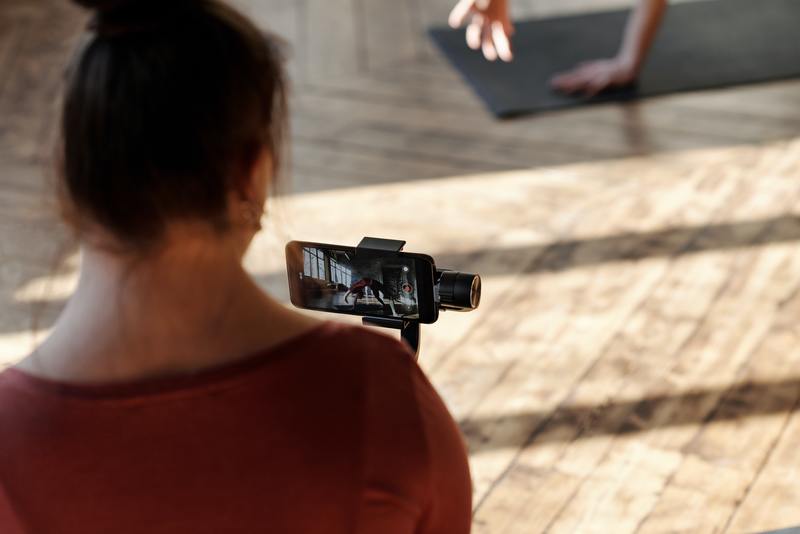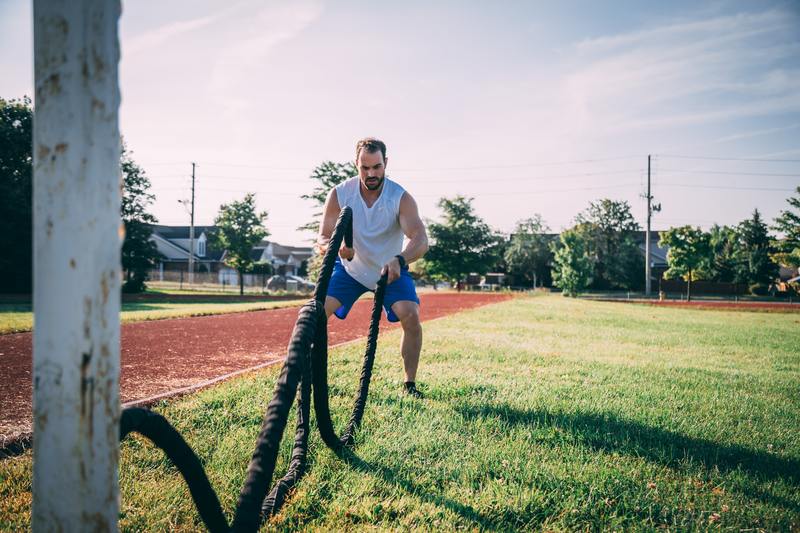10 Creative Adaptations for Fitness-Based Businesses
Topics:
COVID-19
If your fitness business has failed to generate sufficient revenue during government-mandated closures, you’re not alone. Times have been tough — even heartbreaking — for the fitness industry during the pandemic. Gold’s Gym is permanently shutting down more than 30 locations and other franchises and independent gyms are struggling to bear the weight of economic uncertainty.
But with most states re-opening local economies, there may be light at the end of the tunnel. Some members will return enthusiastically while others may be tentative, so a hybrid of in-person and virtual services may be necessary. At this point, the best-case scenario for gyms and other fitness businesses is to do one or more of the following:
- Retain current members
- Attract new members
- Jumpstart new sources of revenue
Consider the following adaptation ideas that gyms across the country have utilized to stay in shape financially, to stay current with clients for a future return, or both.
1. Continue classes virtually

It’s obvious that the use of video conferencing platforms has skyrocketed during the pandemic. But to what extent has the fitness industry made this pivot?
Dacast, an online video platform that allows businesses to broadcast and host video content, experienced a 2,850 percent increase in fitness clients' subscriptions between the end of February to the end of April 2020. According to COO Greg Ellis, usage climbed from about 400GB per month to 115,000GB per month during the same time period.
It’s clear that virtual fitness is exploding and may not disappear post-pandemic.
Ellis expects that studios and trainers will continue and expand their online offerings post-lockdown as they are more convenient for the students and instructors with less required travel time and opportunity for missed classes. “The expanded reach and revenue potential for the instructors and studios should also make virtual a supplement to in-person classes and not something that is abandoned lightly,” Ellis says.
The exception to this is the personal fitness trainer category, as much of the appeal for a personal trainer is the in-person interaction and also because home access to specialized equipment is limited.
So how exactly are gyms operating with a virtual model?
Pay-per-class
When you charge per class, clients can pick and choose their favorites without committing to a certain number of classes in order to get their money’s worth. There is less risk on the part of the client.
That’s what San Francisco-based MX3 Fitness is doing with their classes. MX3 Fitness includes two personal training gyms and one yoga studio. After the shelter in place order was announced, they were able to take their entire business online in less than 48 hours, partly thanks to the fact that founder Glenn Shope was a computer programmer in a former life.
MX3 Fitness offers a complimentary free class, then subsequent classes start at $8 per class.
Virtual tip jar
Unfortunately, MX3’s individual trainers and yogis lost up to 80 percent of their business during the pandemic, so the company added a virtual tip jar on the website for clients to contribute a little extra where possible to help keep them afloat. Co-owner Dave Karraker explains, “This was a biggie. In just a month, they received an amazing 150 tips” as a token of generosity and appreciation from class attendees.
Monthly membership
Brittney Hiller, founder and CEO of brick and mortar yoga studio and spa Effervescence Yoga Spa, was more prepared than most for a digital pivot. “Due to my original creation of my Virtual YogaSpa for members who travel and as a preparation for our frequent hurricane evacuations, I was ready to shift online quickly to help support my members during this time,” says Hiller.
In addition to individual class payments, Hiller offers a monthly, no-contract membership in which members have access to unlimited virtual live yoga classes as well as a wellness resource library that includes meditations, pre-recorded yoga classes, and self-care and wellness-inspired workshops. “Elite” annual memberships are also available.
Hiller has actually seen a rise in yoga attendance since moving to all-virtual services compared to when the studio was physically open. “I believe this is due to the ease of turning on the computer and clicking on a link to enjoy an hour of yoga together,” she explains. “I plan to continue this online option even beyond our physical reopening process”
Pay-what-you-can
Recognizing that members may also be experiencing financial hardship, you may implement a temporary pay-what-you-can policy in which you forego set charges. Another factor is your streaming platform of choice: if you’re streaming via Facebook Live on your public account, for example, there’s no access barrier for anyone to participate.
MX3 Fitness added a pay-what-you-can community yoga class to their schedule. Karraker explains, “We are a ‘community’ gym, so it really felt good to give back, even when our own organization is struggling.” Even though the pandemic has created a huge challenge for the business, Karraker says, “We are seeing some successes, and the gratitude from the community has been nothing short of inspiring.”
Keep in mind that even if your virtual classes are not generating significant revenue in the short-term, client loyalty may pay off in the long run.
Define your boundaries and give options
Tweaking your membership payment structure can definitely be tricky right now. On one hand, you want to assuage fears and appease clients, who may also be struggling. But on the other hand, you may not be willing or able to fully refund memberships when you’re strapped for cash.
Decide which membership updates you feel okay about, then give gym-goers a couple of options to choose from, perhaps including the following:
- Extend membership period
- Issue a refund for the closed time period
- Offer a discount for upcoming months
- Initiate a new promotion for a monthly or yearly membership or punch pass
- Give gym perks and privileges, such as extended facility hours, to existing members to encourage retention
2. Focus on social media engagement and communication

Some gym owners have used the time in social isolation to work on increasing their follower base on Instagram, YouTube, or Facebook. Some of these followers may become paying members at some point for your future on-site, virtual, or hybrid fitness model.
Consider incorporating giveaways for swag or temporary memberships and work with influencers to promote your products or services.
Personal trainer, coach, and sports performance specialist Tom Green operates Greenspeed Training in San Diego. He’s been running contests and giveaways on his social media accounts to keep clients engaged, and he’s seen an increase in followers which will hopefully translate to new business.
Green has also kept in personal contact with clients when they haven’t been able to work out together, which is a necessary practice for any fitness business. Clients need to know what you’re offering in order to participate, whether that’s virtual classes, motivation via text messages or phone calls, or content emphasizing the importance of physical fitness and nutrition.
3. Find a way to give back
To clients
As mentioned, offering free or pay-what-you-can fitness classes is one way to give back.
A willingness to make things fun — “just because” — is also a gift to clients.
Hollywood physique expert Eric the Trainer is holding free live group Zoom classes a couple of times a day Monday through Saturday and has been mixing things up with celebrity performances and fun themes like Broadway (featuring “Hamilton” cast members), Star Wars (featuring actor Matt Lanter, Anakin Skywalker in “Clone Wars”), Harry Potter, and zoo animals (featuring judges from the Los Angeles Zoo).
For Mother’s Day, Eric created a sing-along concert to benefit Feeding America with musical performances by Nickelback, Echosmith, Toto, and Air Supply.
To service professionals
Eric is also working with nutrition clients to donate healthy meals to local hospital frontline workers.
MX3 Fitness added a free weekly yoga class for service industry employees.
Verona Yoga teamed up with another yoga studio to offer a donation-based, all-levels Vinyasa class aimed to help provide meals to healthcare workers at University Hospital in Newark, New Jersey. The best part? The food is to be purchased from Fairfield restaurant Zest, supporting a local eatery during the pandemic as well.
4. Present outdoor exercise options

With the temperature warming up in many parts of the country and balmy weather year-round in other areas, moving your gym activities outside can assuage some fears.
Pam Waddick, owner of gym Hiit56 in Boca Raton, Florida, came up with an idea called “Park ‘n Sweat.” Up to six gym members at a time could park in alternate parking spots with sanitized gear ready to go in the spaces between each set of cars and a socially distanced trainer leading the group.
5. Expand your service offerings
MX3’s Karraker noticed early on in the lockdown that many members were setting up family yoga meetups during their Zoom classes. “This was awesome to see families across the country connect,” says Karraker. “And it made us aware that we now had a very wide age range participating, with kids as young as 12 and grandparents as old as 83.” To ensure all attendees felt engaged, the gym added chair yoga for seniors to be inclusive of more ability levels.
You might expand your studio’s offerings to include one or more of the following:
- 1-on-1 personal training
- Kid-specific fitness classes
- Nutrition consulting
- Mindfulness and meditation
- Yoga
- Mental health services
On a completely non-fitness related note, you may want to rent out your gym as a co-working space for individuals or businesses looking for office space during the hours that members aren’t using it.
Co-working facilitating platform DropDesk partners with businesses during their closed or unused hours, converting them into part-time coworking spaces. Founder Graham Back explains that his platform fosters a sense of community and, for some businesses, has offered their only recurring revenue model during difficult times.
6. Expand your product offerings
If your gym sells swag like clothing or water bottles, have a sale to generate some revenue and clear out old inventory.
Consider creating an online course or at-home fitness guide for purchase.
Rent out equipment such as the following:
- Kettlebells
- Dumbbells
- Yoga mats
- Jump ropes
- Medicine bells
- Wearable fitness trackers
Orthopedic clinical specialist Lawrence Kim owns Edge Physical Therapy and Sports Medicine, working extensively with fitness-based professionals and fitness clients. Kim has implemented remote monitoring via the WHOOP app for elite athletes to add value to his in-person services, incorporate an additional revenue stream, and open up to a broader audience not limited to geography.
7. Initiate an at-home fitness challenge

Organize a remote challenge for members to do as they continue or re-start healthy habits at home. This could look like a weight bet, a daily habit checklist, or a bucket list of local hiking trails.
There are a few ways to motivate and monetize: charge a flat participation fee, have everyone contribute to a pot, some of which returns to the winner(s) of the challenge, or charge a larger amount of money that will be refunded only upon successful completion of the challenge.
You may want to create a training plan for a virtual race or an in-person race at a future date. Take donations for participation in the fun run or a longer-distance race and make it fun by including medals, t-shirts, or prizes.
8. Make cleanliness a priority and communicate that to members
There are different approaches you can take with this, but for optimal cleanliness, a combination of all three may be necessary:
- Emphasize personal responsibility by depending on gym members to sanitize equipment after use
- Increase frequency and coverage of staff sanitizing procedures
- Hire out regular cleaning services
Boutique fitness brand TruFusion has been working with health professionals, including a Chief of Medicine, to ensure that cleaning protocols and the studio design and layout will meet high standards of cleanliness. From power washers built into showers to updating air ducts, the company is considering long-term changes and solutions.
9. Improve spacing and planning with time slots
To make it easier to give members space as they work out, control the number of guests via time slot signups.
Personal trainer Chad Turner is impressed that VASA is doing this and hopes to see it continue. “I like that this method controls the number of people that can come in at one time and customers can schedule their workouts,” Turner explains. “I’d love to see this service at other gyms become the norm even when the quarantine is over. I hate showing up to the gym and seeing it really crowded.”
10. Apply for a relief loan, grant, or business loan
Some gym owners have been able to maintain payroll thanks to the Paycheck Protection Program or other federal and state relief programs.
And even during a global economic downturn, traditional Small Business Administration (SBA) loans and other small business loans may be viable options for your business.
Here’s what reviewers had to say about working with Lendio and VIP Capital Funding earlier this year:
Lendio Customer Review: Colton, Gym Owner
"We weren't sure about using them at first but we are glad we did. Everything was an easy process from start to finish and they hooked us up with the best possible loan for our situation all while explaining each one of our options."
VIP Capital Funding Customer Review: Phil from Houston, TX
"I had 2 funding positions at the time but needed more capital to help the growth for my fitness center. Although we couldn’t consolidate at the time they helped me with a long term plan by strengthening the revenue of my business with a 3rd position and then helping me get funded with a term loan later in the year."
What’s next for the fitness industry?
Americans’ physical activity declined by about 50 percent from March 1 to April 6 according to data from a 150,000+ person fitness tracking cohort. With the reopening of fitness studios, it’s assumed that physical activity will go up. But only time will tell if and how gyms will adapt to the point of recovery after a hiatus.
One popular prediction is the hybridization of in-person and virtual fitness.
Tara Roscioli, co-owner of New Jersey-based Align Wellness Studio, explains that within two days of closing their doors in March, they launched an entirely new business model online including multiple Livestream Pilates, Barre, Sculpt, and Suspension classes; an extensive and growing library of on-line Pilates and fitness videos for rent; a monthly subscription service; and virtual training sessions for individuals and small groups.
“The great part about this pivot is that it has allowed us to tap into clients who otherwise were unable to make our classes,” Roscioli explains. “So rather than going back to regularly scheduled programming once the ban has been lifted, we will continue to offer live-streams of most, of not all, of our classes.”
For gyms that need assistance making this pivot, third-party resources are available.
Jillian Bridgette Cohen, CEO and co-founder of Virtual Health Partners (VHP), explains that her virtual platform helps gyms and fitness studios navigate the new normal of COVID-19, streamlining the home workout process and getting fitness studios back in business.
“VHP gives gyms a way to extend services to members who feel safer working out from home or who just can’t fit into the likely now-limited class capacity,” Cohen explains. “This virtual system fills in the gaps that will be left by new regulations that will control how these businesses will reopen.”
The online portal includes capabilities like granting members access to exclusive branded classes, workouts, nutrition and training tips, progress trackers, accountability groups, and 24/7 access to fitness experts.
The Top Business Loans Companies



The Top Business Loans Companies



Related Articles
Business Loans
How to Develop a Memorable Brand Identity
By Guest
July 22nd, 2022
Business Loans
How to Use Animated Logos for Your Business [with Examp...
Business Loans
Pandemic Workforce Impact: Keeping Employees Involved W...
By Guest
July 22nd, 2022
Get Our Newsletter - Be in the Know
Sign up below to receive a monthly newsletter containing relevant news, resources and expert tips on Business Loans and other products and services.
We promise not to spam you. Unsubscribe at any time. Privacy Policy